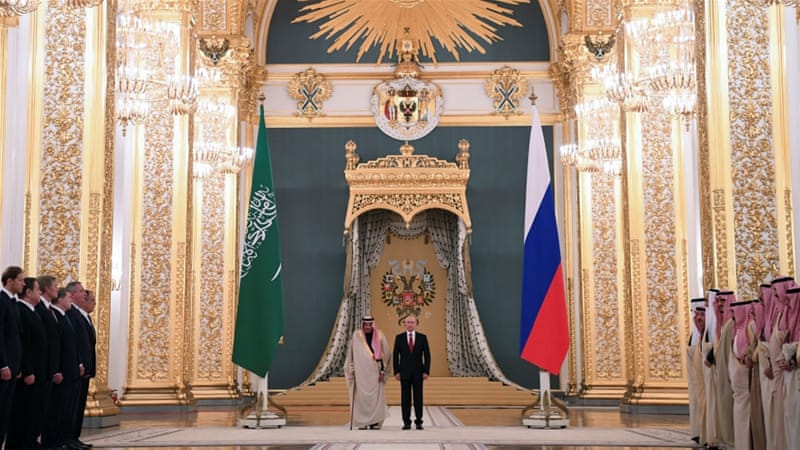by YURY BARMIN
 Russian President Vladimir Putin and Saudi Arabi”s King Salman attend a welcoming ceremony before their talks at the Kremlin in Moscow on October 5 PHOTO/Reuters/Yuri Kadobnov
Russian President Vladimir Putin and Saudi Arabi”s King Salman attend a welcoming ceremony before their talks at the Kremlin in Moscow on October 5 PHOTO/Reuters/Yuri Kadobnov
Russian-Saudi relations could be very different today, if Stalin hadn’t killed the Soviet ambassador to Saudi Arabia.
Last week, Saudi King Salman was greeted in Moscow with a lot of pomp and media attention. The 81-year-old monarch arrived with a 1,500-strong delegation amid high expectations for major political and trade deals.
The first visit of a Saudi king to Russia was rich in diplomatic courtesies, but it lacked in substance. What came out of the three days of meetings was much more modest than expected.
The two countries signed only a handful of agreements, most of which were memoranda of understanding. An agreement was reached to establish a $1bn energy investment fund and a $1bn hi-tech investment fund. The two sides also negotiated the sale of S-400 defence systems. But against the backdrop of the $15bn-worth of arms contracts the US recently approved for Saudi Arabia, the Moscow-Riyadh agreement seems quite modest. It very much seems like the high-level meetings in the Kremlin failed to create an appearance of a political and economic breakthrough in relations.
This shouldn’t be all that surprising given that Russia and Saudi Arabia had a 54-year break in relations, during which the US became Riyadh’s dominant partner and security guarantor. Perhaps the outcome of King Salman’s visit could have been very different, if it weren’t for an incident that spoiled Russian-Saudi relations 80 years ago and caused the break.
It is a little-known fact that Riyadh and Moscow used to enjoy remarkably warm relations in the 1920s and 30s. The Soviet Union was, in fact, a diplomatic pioneer in Saudi Arabia: It was the first state to recognise Abdulaziz Al Saud (King Salman’s father) as the King of the Hijaz and the Sultan of Nejd in February 1926.
The Soviet charm offensive in the Arabian Peninsula in the 1920s was the culmination of numerous attempts by Moscow to gain a foothold in the region prior to that. As early as 1900, Russian imperial military vessels started frequenting the Gulf and making port calls in Kuwait among other destinations. The famous Russian Varyag cruiser visited Kuwait in December 1901 and its captain was greeted by Emir Mubarak Al Sabah despite his agreement with Great Britain not to receive foreign military guests. It was during this visit that the Russians were first introduced to Abdul Rahman Al Saud who was exiled in Kuwait at that time, along with his elder son Abdulaziz, who a year later retook Riaydh from their rivals, the House of Rashid.
As the House of Al Saud was seeking international backing, London looked at young Abdulaziz with a lot of scepticism, which is why he came in contact with the Russian consul in the Persian city of Bushehr inviting him for a visit. The consul visited Kuwait in 1903 accompanied by a Russian military vessel, which caused an outcry in London.
But it wasn’t until after the Bolshevik revolution that Moscow decided to seriously focus on the Gulf. Just like the Russian Empire, the Soviet Union saw the value of diplomatic presence in the region as a way to stand up to Britain.
Al Jazeera for more
